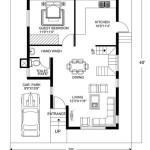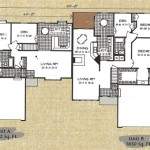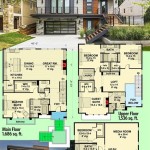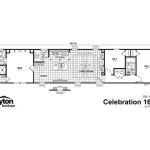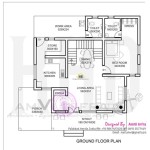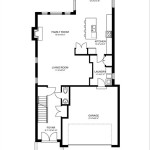Exploring the Grandeur: Understanding Huge Victorian Mansion Floor Plans
Victorian mansions, emblematic of the 19th century's opulence and architectural innovation, represent a fascinating study in residential design. Their floor plans, often sprawling and intricate, reflect the era’s social hierarchies, technological advancements, and aesthetic sensibilities. Understanding these plans requires an appreciation for the historical context and the specific elements that defined Victorian domestic life.
The Victorian era, spanning Queen Victoria's reign from 1837 to 1901, witnessed significant changes in building technology and social structures. This transformation is clearly reflected in the evolution of housing. As industrialization brought wealth to a burgeoning middle class, the demand for larger, more elaborate homes increased. These mansions served as both residences and statements of social standing, showcasing the owner's prosperity and refined taste.
Victorian mansions are not monolithic; they encompass a variety of architectural styles including Gothic Revival, Italianate, Queen Anne, and Second Empire. Each style exhibits distinctive features, influencing the floor plan configuration and spatial arrangement. However, common threads run through them all, reflecting the functional and social requirements of the time. These include a separation of public and private spaces, dedicated areas for servants, and specialized rooms for specific activities.
Key Elements of Victorian Mansion Floor Plans
Several key elements consistently appear in Victorian mansion floor plans, shaping their overall layout and functionality. These include the separation of public and private zones, the emphasis on reception and entertaining spaces, and the provision of extensive service areas. Each element contributes to the distinct character and lifestyle associated with these grand homes.
The clear division between public and private areas was a defining characteristic of Victorian domestic architecture. Public spaces, such as the parlor, drawing room, and dining room, were designed for receiving guests and conducting social interactions. These rooms were typically located on the ground floor and prominently displayed the family's wealth and taste through elaborate décor and furnishings.
In contrast, private spaces, including bedrooms, dressing rooms, and family sitting rooms, were intended for the exclusive use of the family and close friends. These rooms were generally located on the upper floors, providing privacy and seclusion from the more public areas of the house. The separation of these zones ensured a balance between social engagement and family intimacy.
The emphasis on reception and entertaining spaces reflects the importance of social life in Victorian society. The parlor, often the most elaborately decorated room in the house, served as a formal space for receiving guests. The drawing room, typically adjacent to the parlor, provided a more intimate setting for conversation and socializing. The dining room, designed for formal meals, was often located near the kitchen for convenient service.
Hallways and staircases played a crucial role in connecting these spaces, creating a sense of grandeur and flow. Wide hallways, often adorned with decorative moldings and artwork, provided ample space for movement and circulation. Elaborate staircases, featuring ornate banisters and carved details, served as focal points within the entrance hall, further emphasizing the home's opulence.
The provision of extensive service areas was essential in Victorian mansions, reflecting the reliance on a large domestic staff. These areas, typically located at the rear or side of the house, included the kitchen, pantry, laundry room, servants' quarters, and storage spaces. The layout of these areas was carefully planned to ensure efficient operation and minimal disruption to the main living spaces.
The kitchen, often located in a separate wing or at the rear of the house, was the heart of the service area. Equipped with advanced appliances such as cast-iron stoves and iceboxes, the kitchen was a bustling hub of activity. The pantry, located adjacent to the kitchen, provided storage for food and kitchen supplies. The laundry room, often located in the basement, was equipped with washing machines and drying racks for handling the household's laundry.
Servants' quarters, typically located on the upper floors or in a separate wing, provided living space for the domestic staff. These quarters often included bedrooms, a common living area, and a separate staircase for discreet access to the rest of the house. The arrangement of these areas reflected the social hierarchy within the household and the importance of maintaining a clear separation between the family and the staff.
Analyzing Floor Plan Variations Across Victorian Styles
Despite the common elements, Victorian mansion floor plans varied significantly depending on the specific architectural style. Gothic Revival, Italianate, and Queen Anne styles, for example, each exhibited distinct characteristics in their floor plan configurations and spatial arrangements. Understanding these variations requires an examination of the defining features of each style.
Gothic Revival mansions, inspired by medieval architecture, often featured asymmetrical floor plans with pointed arches, steeply pitched roofs, and elaborate ornamentation. The floor plan typically included a grand entrance hall, a formal parlor, a library, and a dining room. The upper floors housed bedrooms, dressing rooms, and servants' quarters. The emphasis on verticality and asymmetry created a sense of drama and grandeur.
The Italianate style, characterized by its symmetrical facade, low-pitched roof, and prominent cornice, often featured a more regular floor plan than Gothic Revival mansions. The floor plan typically included a central hallway flanked by formal living spaces, such as the parlor and dining room. The upper floors housed bedrooms and family living areas. The emphasis on symmetry and balance created a sense of order and elegance.
Queen Anne mansions, known for their eclectic mix of architectural details, asymmetrical facades, and wrap-around porches, often featured complex and irregular floor plans. The floor plan typically included a variety of interconnected rooms, such as the parlor, drawing room, library, and music room. The upper floors housed bedrooms, bathrooms, and dressing rooms. The emphasis on variety and detail created a sense of informality and charm.
The arrangement of rooms in Queen Anne mansions often reflected the family's lifestyle and social activities. For example, a music room might be located near the parlor, allowing for easy transition between social gatherings and musical performances. A library might be located near the family sitting room, providing a quiet space for reading and study. The flexibility and adaptability of the Queen Anne floor plan made it a popular choice for Victorian families.
The variations in floor plan styles also reflected regional differences and local building traditions. For example, Victorian mansions in the Southern United States often featured wide verandas and open floor plans to accommodate the warm climate. Victorian mansions in the Northeastern United States often featured more compact floor plans and smaller windows to conserve heat during the cold winters. These regional variations demonstrate the adaptability of Victorian architecture to different environmental and cultural contexts.
The Evolution of Victorian Mansion Floor Plans: Technological and Social Influences
The evolution of Victorian mansion floor plans was significantly influenced by technological advancements and changing social norms. The introduction of new building materials, heating and plumbing systems, and lighting technologies transformed the way homes were designed and constructed. Simultaneously, shifts in social hierarchies, family structures, and domestic ideals shaped the spatial arrangement and functionality of Victorian mansions.
The introduction of new building materials, such as mass-produced lumber, cast iron, and plate glass, allowed for the construction of larger, more elaborate homes. These materials enabled architects to create expansive floor plans with higher ceilings, larger windows, and more ornate detailing. The availability of these materials also reduced construction costs, making Victorian mansions accessible to a wider range of families.
Advancements in heating and plumbing systems significantly improved the comfort and convenience of Victorian homes. Central heating systems, powered by coal-fired furnaces, provided consistent warmth throughout the house. Indoor plumbing, including flush toilets and hot water systems, eliminated the need for outhouses and water pumps. These advancements transformed the daily lives of Victorian families, making their homes more comfortable and hygienic.
The introduction of gas and electric lighting revolutionized the way Victorian homes were illuminated. Gas lighting, powered by gas mains, provided brighter and more consistent light than candles or oil lamps. Electric lighting, introduced in the late 19th century, offered even greater efficiency and safety. These advancements transformed the atmosphere of Victorian homes, allowing for evening social gatherings and increased productivity.
Changes in social norms also influenced the evolution of Victorian mansion floor plans. The rise of the middle class and the emphasis on domesticity led to the creation of more specialized rooms for family activities, such as the nursery, playroom, and sewing room. The increased emphasis on privacy led to the separation of public and private spaces, with bedrooms and family living areas located on the upper floors.
The changing role of women in Victorian society also influenced floor plan design. As women became increasingly involved in domestic management and social activities, the need for more functional and convenient spaces increased. Kitchens were modernized with new appliances and layouts to facilitate food preparation. Laundries were equipped with washing machines and drying racks to simplify the task of laundry. These changes reflected the evolving needs and responsibilities of Victorian women.
The floor plans of Victorian mansions provide valuable insights into the social, technological, and cultural context of the 19th century. By examining these plans, one can gain a deeper understanding of the lives and aspirations of Victorian families, as well as the architectural innovations that shaped their homes.

Good Victorian Mansion Floor Plans House Plan

Victorian House Plans Home Design Gml D 756 19255 Layout Mansion

This Just In Tom Brady Likes To Lose Victorian House Plans Mansion Floor Plan
Victorian House Plans Home Design Gml D 756 19255

Home Ham Design Victorian House Plans Mansion Floor Plan One Bedroom

Balm Castle House Plans Luxury Home

House Plan 106 1070 5 Bedroom 6728 Sq Ft Colonial European Home Tpc Cordelia

Luxurious Victorian Home Plan Builder Ready 3225

4 Bedroom Multi Story Hampton Style Home Floor Plan
Sims 3 4 House Builds Victorian Plan 12805gc Wattpad

